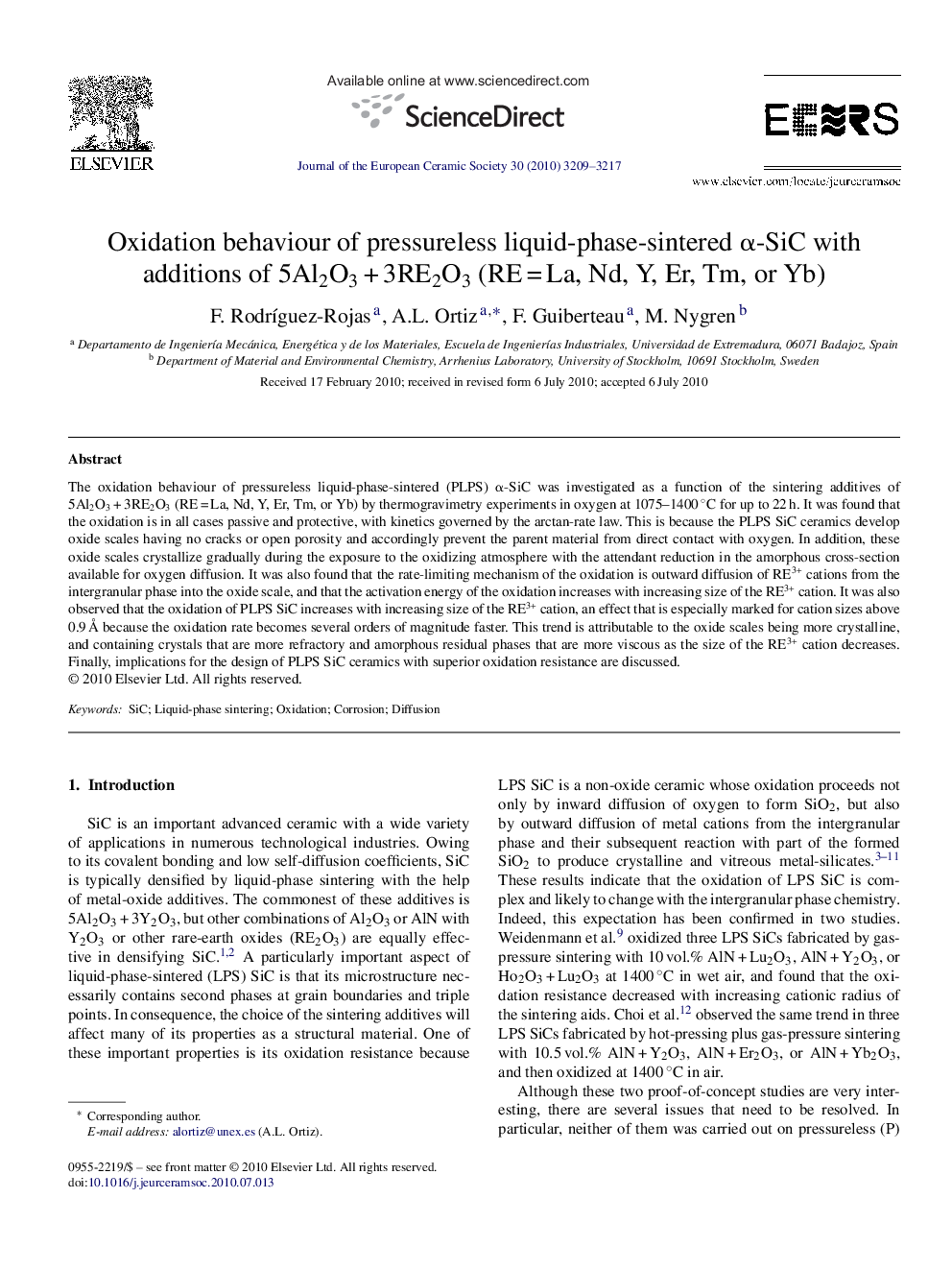| Article ID | Journal | Published Year | Pages | File Type |
|---|---|---|---|---|
| 1476511 | Journal of the European Ceramic Society | 2010 | 9 Pages |
The oxidation behaviour of pressureless liquid-phase-sintered (PLPS) α-SiC was investigated as a function of the sintering additives of 5Al2O3 + 3RE2O3 (RE = La, Nd, Y, Er, Tm, or Yb) by thermogravimetry experiments in oxygen at 1075–1400 °C for up to 22 h. It was found that the oxidation is in all cases passive and protective, with kinetics governed by the arctan-rate law. This is because the PLPS SiC ceramics develop oxide scales having no cracks or open porosity and accordingly prevent the parent material from direct contact with oxygen. In addition, these oxide scales crystallize gradually during the exposure to the oxidizing atmosphere with the attendant reduction in the amorphous cross-section available for oxygen diffusion. It was also found that the rate-limiting mechanism of the oxidation is outward diffusion of RE3+ cations from the intergranular phase into the oxide scale, and that the activation energy of the oxidation increases with increasing size of the RE3+ cation. It was also observed that the oxidation of PLPS SiC increases with increasing size of the RE3+ cation, an effect that is especially marked for cation sizes above 0.9 Å because the oxidation rate becomes several orders of magnitude faster. This trend is attributable to the oxide scales being more crystalline, and containing crystals that are more refractory and amorphous residual phases that are more viscous as the size of the RE3+ cation decreases. Finally, implications for the design of PLPS SiC ceramics with superior oxidation resistance are discussed.
